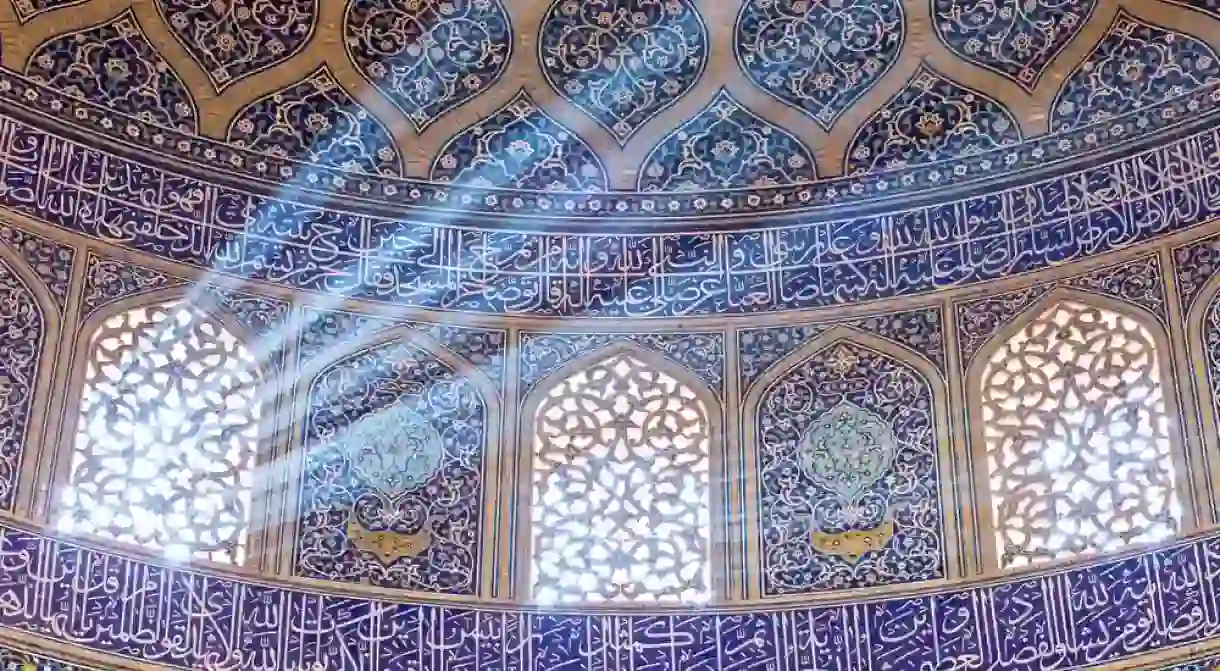20 Photos That Will Make You Change Your Mind About Iran

In 2002, the then US President George W. Bush, accused Iran of being along ‘The Axis of Evil’. Following this, images most synonymous with Iran were either of violence and protest, or of a backward and barren land next door to the war-torn country of Afghanistan. Visiting Iran was not advised by many Western countries and travellers were under the impression that it was dangerous to so. Fast forward a decade and things are slowly changing as Iran is increasingly becoming a popular destination for tourists. If you’re still unsure about visiting this captivating, largely unexplored country, then here are 20 photos sure to change your mind.
Every Landscape You Could Imagine
The diversity of landscapes in Iran will surprise you, from the picturesque lakes in the Alamut region…

…to the top of Mount Damavand.

The south of Iran has a tropical climate, where palm trees line the streets and the saltiness of the sea lingers in the air.

The traditional village of Masuleh is located in the province of Gilan, which boasts a wonderfully green landscape. The architecture of the village is also very curious, with houses built into the mountains in an interconnected way, forming pavements across the roofs for people to walk across. Cars are prohibited from entering the village due to lack of space and infrastructure.

The Dash-e-Lut desert is a large salt desert located in the provinces of Kerman and Sistan and Baluchistan. Temperatures as high as 70 degrees celsius have been recorded here, making it one of the hottest places on earth.

Diversity of People
Iran has a total population of over 80 million, and unsurprisingly they comprise a variety of different ethnic groups including Persians, Kurds, Azeris and Arabs.
Here, a Bandari woman is pictured wearing a traditional mask at the fish market in Bandar Abbas.

Kurdish Nomads living in Iran.

In the capital Tehran you will mostly see women dressed in a modern fashion although still abiding by the Islamic Republic’s dress code.

Food Glorious Food!
Iranian cuisine is world renowned, and if there’s one thing you can be assured about your trip to Iran it’s that you will be fed incredibly well.

Iranians love olives and pickles. Every traditional meal will likely come with a delicious and colourful side dish of pickles.

Tehran, a cosmopolitan dream
You may be surprised at how modern and developed the capital city of Tehran is. The city has a great deal to offer from museums and galleries, to restaurants and five-star luxury hotels.

The Big Bazaar in Tehran.

Islamic archiecture
Take a peep into the beautiful Islamic architecture displayed across the country dating from as far back as the fall of the Sassanid empire. Traditional arts such as calligraphy, stucco work, mirror work and mosaics became closely tied with the architecture of the Mosques in Iran after Islam took its place as the predominant religion.

Jameh or Friday Mosque of Isfahan, Iran.

The intricate ceiling architecture of the Jameh Mosque in Isfahan.

The Vakil Mosque in Shiraz was built between 1751 and 1773, during the reign of the Zand dynasty over Iran.

Nasir ol Molk Mosque in Shiraz, Iran was built in 1888 and is known in Persian as Masjed-e Naseer ol Molk.

Travel back in time
The ancient city of Persepolis was the ceremonial capital of the Achaemenid Empire in 550–330 BC, and is situated just outside the city of Shiraz.

Ancient tombs of Achaemenid kings at Naqsh-e Rustam dating back to 500–330 B.C.

Rayen castle is a very well preserved citadel believed to be at least 1,000 years old, dating back to the Sassanid era.














